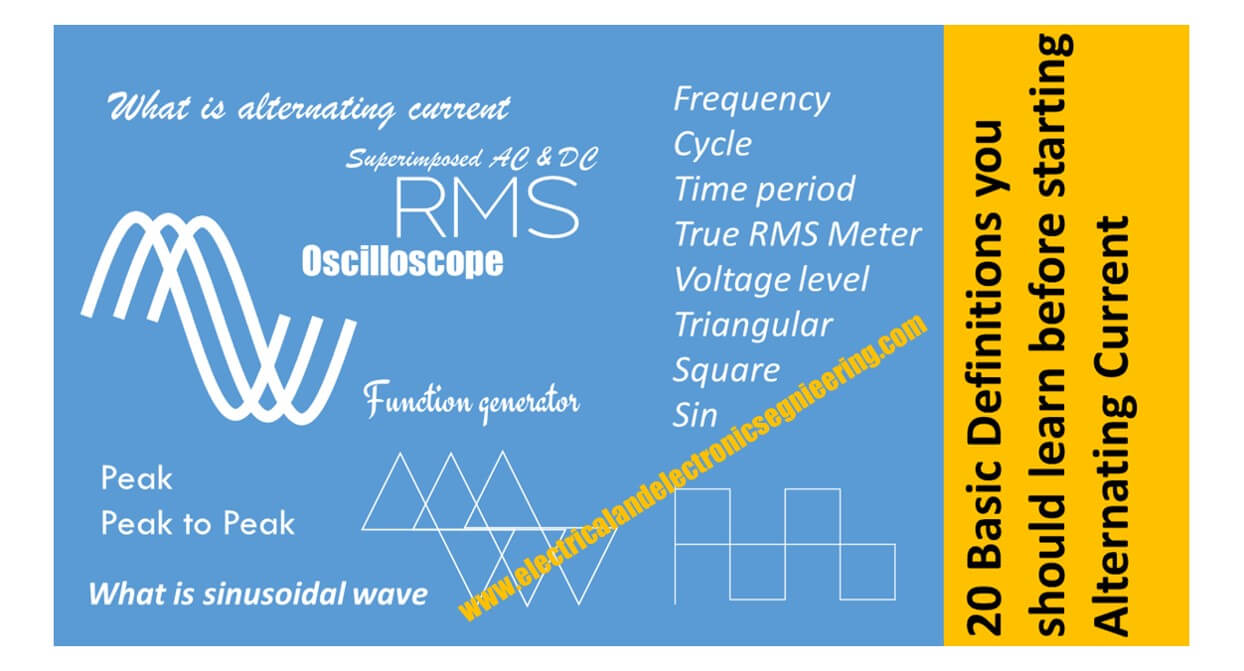All types of Electrical and Electronic Devices involve the use of AC current in some way. AC is important for a number of reasons. Majority of our electric power system is based on AC. Furthermore, electronic devices use ac signals, our audio, and telecom based systems are also based on AC. Given below are the top 20 basic alternating current analysis definitions.
What is AC
AC or alternating current is the type of current which alternates its direction after regular intervals of time. Such current is produced by AC source (whose polarity alternates regularly with time).
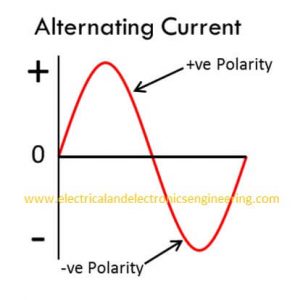
What is cycle of AC Wave
One complete variation of sinusoidal wave is known as cycle. In figure above one complete cycle of AC is shown.
What is waveform
The variation of AC signals versus time is also referred as AC waveform.
What is Sinusoidal waveform
The electrical current coming in our home is sinusoidal in shape. It is referred as sinusoidal waveform. The figure below displays a sinusoidal waveform. The electric current coming in our homes is also sinusoidal in nature.
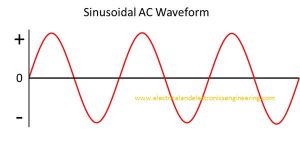
How AC voltages are generated
Practically AC voltages are generated from AC generators. The working principle of generators is based on the fact that: A moving wire in the presence of a magnetic field has AC voltages generated on it.
What is frequency
The number of cycles completed by a waveform in one second is defined as the frequency. The figure below displays a sinusoidal waveform which completes three cycles in one second. The frequency of this wave is 3 Hz.
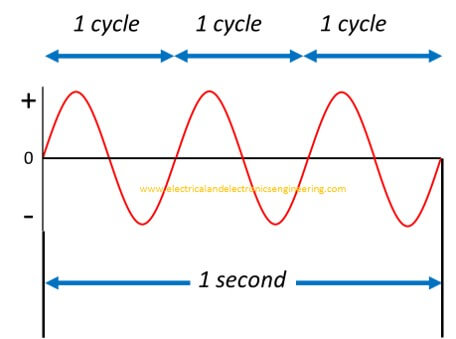
What is the time period of waveform
The time period of the waveform is the duration required to complete one cycle. In the above case of waveform, the time period is 0.334 seconds. Since it takes approximately 0.334 seconds to complete 1 cycle.
Mathematically the time period is inverse of frequency. For example in above case:
Time period = 1/Frequency
t = 1/f; t = 1/3 Hz = 0.334 s
What is peak value
The maximum value with respect to zero is termed as peak value.
What is peak to peak value
The overall voltage from 0 to positive peak and then back to a negative peak is termed as peak to peak value.

What is the Average value of AC
Generally, the average value is the sum of all values vs the total number of items considered. For example, your average marks in subjects can be calculated by dividing the overall marks by the total number of the subjects. Similarly, in the case of AC, the average value of the AC waveform is the ratio between area under the curve to the length of the base (time period). Remember that in pure sine wave the sum of all values (+ve and -ve) is zero and thus the average value of Sine wave is zero.
What is Effective value of AC
The equivalent DC value of a waveform is known as its AC value.
What is RMS value
The effective value of AC waveform is also known as RMS value.
What is Function generator
An electrical device which is designed to generated different types of waveform at different frequencies and voltage levels.
What is Digital Oscilloscope
The electrical measurement device which is used to observe waveform of AC signals.
True RMS meter
A special type of RMS meter that can measure RMS values of all types of waveform. Normal multimeters can only measure RMS value of the sinusoidal waveform. A true RMS meter is designed to deal with all types of the waveform and thus the name TRUE RMS is given.
Freuqency & Voltage of AC in USA
The frequency of AC in USA is 60 Hz, while voltage is 120 V.
Frequency & Voltage in UK
The frequency in the UK and other countries (majority) is at 50 Hz while the voltage level is 230 V.
What is a square waveform
The AC waveform whose shape is in the form of squares:
What is the triangular waveform
The AC waveform whose shape matches a triangle
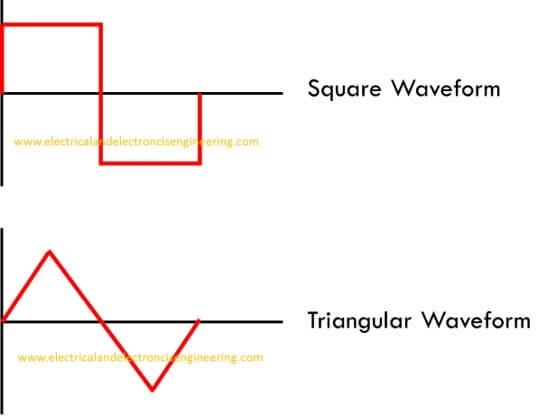
What is superimposed AC & DC
Sometimes, in electronic circuits the AC and DC are used together. In such cases the term superimposed AC & DC is used.
